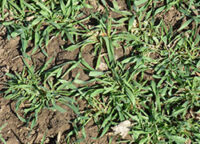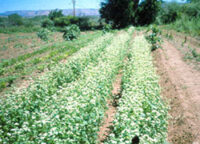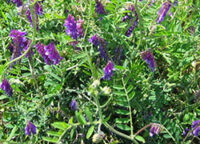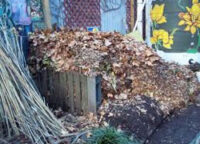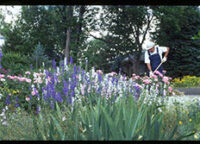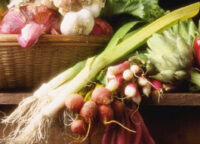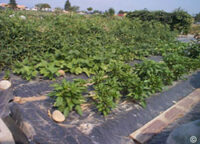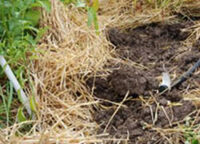- 02, 03, 2017
- Comments Off on 1607 – Cover Crops: Winter Rye
- By cwis672
1607 – Cover Crops: Winter Rye
Fall is one of the best times of year to plant cover crops to improve soil. Planting a cover crop is easy, and delivers many benefits. Why is winter rye a good choice for a cover crop? Winter rye grass is a popular Colorado cover crop, and it’s a natural because it grows well in […]
Take a Tour- 02, 02, 2017
- Comments Off on 1616 – Cover Crops
- By cwis672
1616 – Cover Crops
What are cover crops used for? Cover crops usually are grown to prevent soil loss from wind and water erosion. Use fast-growing cover crops, such as winter wheat or annual rye, on fall-spaded gardens. A second, and probably more important reason home gardeners should use cover crops is to improve soil structure and increase organic […]
Take a Tour- 02, 10, 2017
- Comments Off on 1848 – Cover Crop Time
- By cwis672
1848 – Cover Crop Time
Mid-October is a good time to plant winter cover crops for improving soils where vegetables are grown. A long term plan for building and maintaining desirable levels of both organic matter and nitrogen is desirable. Non-legume cover crops help with organic matter and legumes can add both organic matter and nitrogen. What are good cover […]
Take a Tour- 08, 22, 2018
- Comments Off on Fall Gardening
- By cwis672
Fall Gardening
Annuals/Perennials Design Fruits Houseplants Insects/Diseases Lawns Miscellaneous Soils/Amendments/Composting Trees/Shrubs/Vines Vegetables Water Considerations Annuals/Perennials Bulbs: deer resistant Bulbs: fall bulb planting for spring blooms Bulbs: fertilizing Bulbs: maintaining Bulbs: selecting Pansies for seasonal color Perennials: winterizing Perennials: winterizing during drought Water gardening: winterizing water lilies Design Tree placement tips Water Considerations Winterizing Sprinkler Systems Fruits Preparing […]
Take a Tour- 08, 12, 2016
- Comments Off on Soils, Amendments & Composting
- By cwis672
Soils, Amendments & Composting
Composting: an overview Composting: fall leaves Composting: making Composting: structures Composting: using Composting: what can be composted Composting: worm composting Cover Crops Cover Crops: winter rye Epsom salts & wood ashes Expansive soils Fertilizers Gypsum Maintaining healthy soils Manure & soil improvement Organic mulches Organic soil amendments Organic vs. manufactured fertilizers Phosphate fertilizers & water […]
Take a Tour- 02, 15, 2017
- Comments Off on 1910 – Xeriscape Maintenance
- By cwis672
1910 – Xeriscape Maintenance
The easiest way to minimize landscape maintenance is to plant gardens adapted to the local environment. Weeding, pruning, proper fertilizer and irrigation system adjustments are some of the maintenance practices that need to be kept up with. Aerate the lawn twice a year, spring and fall, to help the water permeate into the root zone. […]
Take a Tour- 02, 13, 2017
- Comments Off on 1850 – When to Mulch Vegetables
- By cwis672
1850 – When to Mulch Vegetables
If spring is cool, mulching warm season vegetables is a poor idea early in the growing season. Wait until soils have thoroughly warmed before applying mulch. This is particularly critical for pepper production. Peppers don’t produce well if mulch keeps soils cool. Wait until July to mulch with grass clippings or other mulches. Note that […]
Take a Tour- 02, 13, 2017
- Comments Off on 1830 – Hot Weather Impacts Vegetables
- By cwis672
1830 – Hot Weather Impacts Vegetables
High temperatures cause problems with vegetable gardens. Plants transpire faster than normal in intense heat. If roots are not well established and healthy, leaves can scorch despite adequate moisture. Low humidity compounds problems and may promote spider mite problems. Heat and low humidity also affect blossom and pollen viability; bean blossoms abort and corn pollen […]
Take a Tour- 02, 10, 2017
- Comments Off on 1809 – Growing Warm Season Vegetables
- By cwis672
1809 – Growing Warm Season Vegetables
What is a warm season vegetable? Beans, corn, cucumbers, melons, okra, eggplant, peppers, tomatoes, pumpkin and squash are warm-season vegetables. Many of these crops grow under cool conditions, but won’t produce fruit when night temperatures are in the 50 degree Fahrenheit range. They need warm temperatures to grow and mature. Once the fruit begins to […]
Take a Tour- 02, 10, 2017
- Comments Off on 1852 – Growing Vegetables in a Dry Land Takes Planning
- By cwis672
1852 – Growing Vegetables in a Dry Land Takes Planning
Adapted from the CO-Horts blog originally authored by Carol O’Meara, Boulder County Extension Build your soil’s moisture holding capacity by amending the soil with organic material, such as compost. This breaks up clay, providing better growing conditions for roots during times of stress. Make a commitment to drip or trickle irrigation. Sure, a gently oscillating […]
Take a Tour
